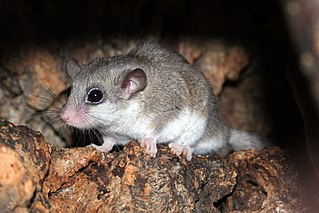
The bulbuls are a family, Pycnonotidae, of medium-sized passerine songbirds. Many forest species are known as greenbuls, brownbuls, leafloves, or bristlebills. The family is distributed across most of Africa and into the Middle East, tropical Asia to Indonesia, and north as far as Japan. A few insular species occur on the tropical islands of the Indian Ocean. There are over 150 species in 27 genera. While different species are found in a wide range of habitats, the African species are predominantly found in rainforest. Rainforest species are rare in Asia, however, with Asian bulbuls preferring more open areas.

The ostriches are a family, Struthionidae, of flightless birds. The two extant species of ostrich are the common ostrich and Somali ostrich, both in the genus Struthio, which also contains several species known from Holocene fossils such as the Asian ostrich. The common ostrich is the more widespread of the two living species, and is the largest living bird species. Other ostriches are also among the largest bird species ever.

Basil, also called great basil, is a culinary herb of the family Lamiaceae (mints).

A dormouse is a rodent of the family Gliridae. Dormice are nocturnal animals found in Africa, Asia, and Europe, and are particularly known for their long periods of hibernation.

Gnetum is a genus of gymnosperms, the sole genus in the family Gnetaceae and order Gnetales. They are tropical evergreen trees, shrubs and lianas. Unlike other gymnosperms, they possess vessel elements in the xylem. Some species have been proposed to have been the first plants to be insect-pollinated as their fossils occur in association with extinct pollinating scorpionflies. Molecular phylogenies based on nuclear and plastid sequences from most of the species indicate hybridization among some of the Southeast Asian species. Fossil-calibrated molecular-clocks suggest that the Gnetum lineages now found in Africa, South America and Southeast Asia are the result of ancient long-distance dispersal across seawater.

Agriotherium is an extinct genus of bears whose fossils are found Miocene through Pleistocene-aged strata of North America, Europe, Africa, and Asia, living from ~13.6–2.5 Ma, existing for approximately 11.1 million years. Materials of the late surviving A. africanum from Africa have suggested that A. africanum died out during the early Gelasian.

The pyjama shark or striped catshark is a species of catshark, and part of the family Scyliorhinidae, endemic to the coastal waters of South Africa. This abundant, bottom-dwelling species can be found from the intertidal zone to a depth of around 100 m (330 ft), particularly over rocky reefs and kelp beds. With a series of thick, parallel, dark stripes running along its stout body, the pyjama shark has an unmistakable appearance. It is additionally characterized by a short head and snout with a pair of slender barbels that do not reach the mouth, and two dorsal fins that are placed far back on the body. It can grow up to a length of 1.1 m (3.6 ft) long.
Mycobacterium africanum is a species of Mycobacterium that is most commonly found in West African countries, where it is estimated to cause up to 40% of pulmonary tuberculosis. The symptoms of infection resemble those of M. tuberculosis.

Trichodesma is a genus of flowering plants in the borage family, Boraginaceae. There are about 40 to 45 species distributed in tropical and subtropical regions of Africa, Asia, and Australia.

Gnetum africanum is a vine gymnosperm species found natively throughout tropical Africa. Though bearing leaves, the genus Gnetum are gymnosperms, related to pine and other conifers.
Tricarpelema is a genus of monocotyledonous flowering plants in the dayflower family consisting of 8 species. The genus is divided into two subgenera, subgenus Tricarpelema, which includes 7 known species found in tropical Asia, and subgenus Keatingia with one species in western Africa. The Asian species are typically found in the forest understory while the single African species has evolved to drier, sunnier conditions and is usually associated with inselbergs.
Tricarpelema brevipedicellatum is a monocotyledonous herbaceous plant in the dayflower family. The species is known from only two collections made in Vietnam and very little is known about it.
Tricarpelema giganteum is a monocotyledonous herbaceous plant in the dayflower family. It is native to eastern India and Bhutan. Tricarpelema giganteum serves as the type species for the genus.
Tricarpelema glanduliferum is a monocotyledonous herbaceous plant in the dayflower family. It is known from only two collections from India and Vietnam respectively. The species is distinctive within the genus due to its small leaves and the dense glandular hairs found on the inflorescences.
Tricarpelema philippense is a monocotyledonous herbaceous plant in the dayflower family. It occurs in maritime Southeast Asia in the Philippines, Malaysia, and Indonesia.
Tricarpelema pumilum is a monocotyledonous herbaceous plant in the dayflower family. It is known from only six collections on the island of Borneo. The species looks like a smaller version of the closely related Tricarpelema philippense, but the two can be differentiated based on the size and shape of the capsule, as well as the number of seeds per locule.
Eogavialis is an extinct genus of eusuchian crocodylomorph, usually regarded as a gavialoid crocodylian. It superficially resembles Tomistoma schlegelii, the extant false gharial, and consequently material from the genus was originally referred to Tomistoma. Indeed, it was not until 1982 that the name Eogavialis was constructed after it was realised that the specimens were from a more basal form.

Peratherium is a genus of metatherian mammals in the family Herpetotheriidae that lived in Europe and Africa from the Early Eocene to the Early Miocene. Species include the following:
Erythrophleum africanum, the African blackwood, is a legume species in the genus Erythrophleum found in Savannahs of tropical Africa. It produces a gum similar to gum arabic.
The Turkestani long-eared bat, Otonycteris leucophaea, is a species of bat found in Asia. Though it was initially described in 1873 as a species, for many years it was considered synonymous with the desert long-eared bat, Otonycteris hemprichii. Recently, it was recognized as a distinct species once again.










